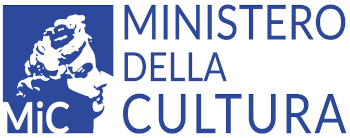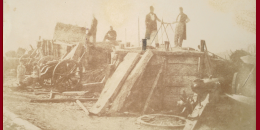Headquarters
The Library is located in the Palazzo Mattei di Giove (also known as the Antici Mattei).
The reading rooms and offices are located on the second floor.
The Newspaper Archive is located on the ground floor and can be accessed via the second courtyard.
Information services and the online catalogues can be accessed from both the second floor and from the Newspaper Archive. The paper catalogues and the loan service can be accessed only on the second floor.
In the main library office there is a sundial built on the floor, in the second half of the 18th century by Duke Giuseppe IV Mattei.
The Palace
Palazzo Mattei di Giove, also known as Palazzo Antici-Mattei, was built at the behest of Asdrubale Mattei, Marquis di Giove, who entrusted the construction to Carlo Maderno. Work started in 1598 and took about twenty years to complete. This was the last of the five buildings that make up the “insula Mattei”. It is constructed with bricks and travertine marble, and its facade is of the late sixteenth-century style. The building is made up of three floors and the ornate cornice is decorated with the heraldic motifs of the family; at the top of the building there is an altana tower, containing a small loggia.
The two courtyards and the staircase of the building are decorated with ancient sculptures, reliefs and vases which come mostly from the archaeological excavations carried out in sites owned by the Mattei family. The objects and artefacts within the building make up one of the most precious and substantial private collections of ancient marbles in Rome. The rooms of the building, in particular those on the main floor, which house the American Studies Center, have vaults painted by some of the most important artists of early seventeenth century Rome, such as Francesco Albani, Gaspare Celio, Cristoforo Greppi, Giovanni Lanfranco and Pietro da Cortona. The numerous paintings that once hung within the Palazzo were transferred to the National Gallery of Ancient Art in Palazzo Barberini.
In the early 19th Century, when the male line of the family came to an end, the palace was inherited by Marianna, daughter of Giuseppe Mattei and wife of Carlo Teodoro Antici of Recanati, the brother of Adelaide (the mother of Giacomo Leopardi).
Leopardi had stayed in the Palazzo for a short period between November 1822 and April 1823.
The Palazzo also contains:
- The Istituto Centrale per i Beni Sonori e Audiovisivi (the Institute for Sound and Audiovisual Materials, formerly known as the National Disco)
- The Historical Institute of Modern and Contemporary Periods
- The American Studies Center

















